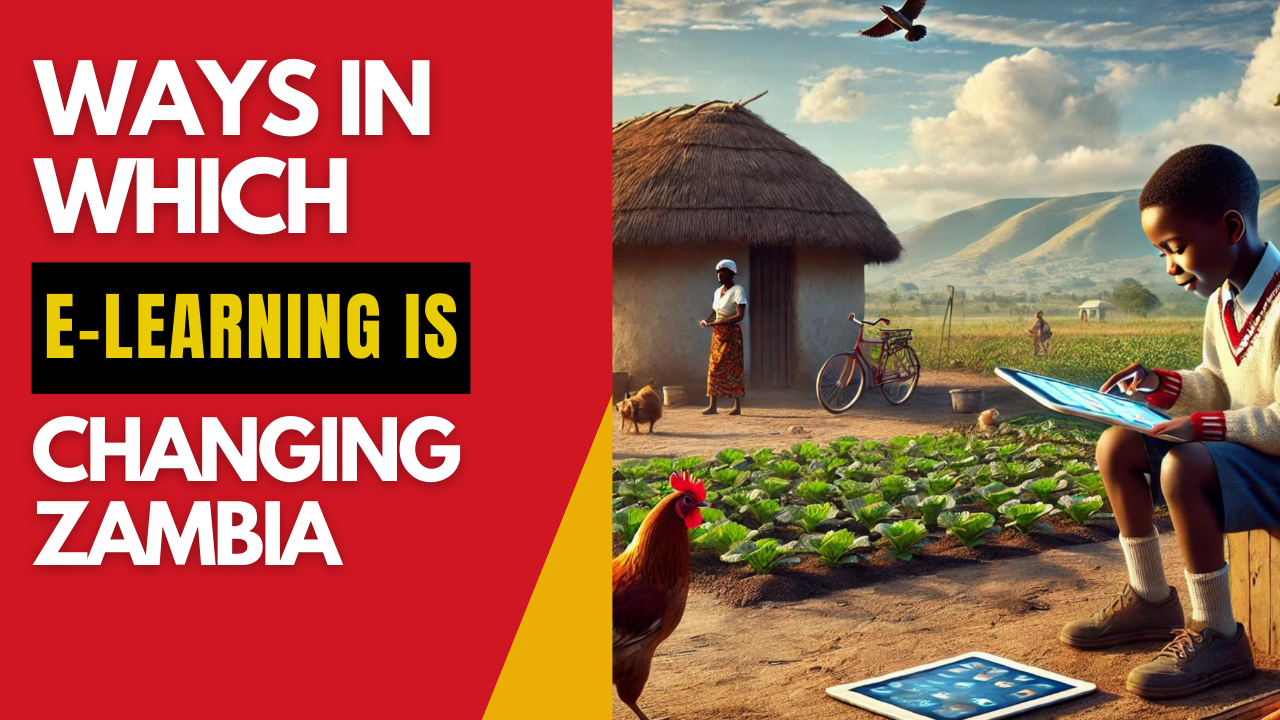The transformation of Education in Rural Areas
1. The State of Education in Remote Zambia
Education is a fundamental right, but in many remote areas of Zambia, access to quality education remains a significant challenge. Traditional schooling methods in these regions are often impeded by a lack of resources, inadequate infrastructure, and a severe shortage of qualified teachers. As a result, these areas face overcrowded classrooms, limited access to secondary education, especially for girls and marginalized communities, and overall low literacy rates.

2. The Rise of E-Learning Platforms
In response to these challenges, e-learning platforms have emerged as a transformative force in the Zambian education landscape. These digital platforms are making quality education more accessible to students in remote areas by providing a wide range of educational resources. From digital textbooks to interactive lessons, students can access these materials through computers, tablets, and smartphones. E-learning empowers students to learn at their own pace, bridging the significant gap between urban and rural education.
3. Government Initiatives and Partnerships
Recognizing the transformative potential of e-learning, the Zambian government has launched several initiatives aimed at promoting digital education. Programs like the Digital Education Project, along with partnerships with organizations such as UNICEF and the World Bank, are focused on bringing e-learning to remote areas. These initiatives are centered on improving educational infrastructure, training teachers, and ensuring that students in rural communities have access to digital devices and the internet.
4. Benefits of E-Learning in Remote Areas
E-learning offers numerous benefits for students in remote areas of Zambia. It opens up access to a broader curriculum, allowing students to study subjects that may not be available in their local schools. E-learning also ensures continuity of education during disruptions, such as those caused by the COVID-19 pandemic. Additionally, these platforms offer personalized learning experiences, enabling students to better grasp difficult concepts and tailor their education to their individual needs.
5. Overcoming Challenges in E-Learning Adoption
Despite its potential, the widespread adoption of e-learning in Zambia faces several challenges. Limited access to electricity, poor internet connectivity, and the high cost of digital devices are major obstacles, particularly in remote areas. However, innovative solutions such as solar-powered devices, offline learning resources, and community-based learning centers are being developed to address these issues and make e-learning more accessible to all students.
6. Success Stories of E-Learning in Zambia
There are already notable success stories of e-learning initiatives in Zambia. For instance, in the Western Province, a community-based e-learning program has significantly improved literacy rates among school children by providing access to digital lessons and educational games. These success stories demonstrate the transformative power of e-learning and its positive impact on education in remote areas of Zambia.
Conclusion
The e-learning revolution is fundamentally changing the education landscape in Zambia, providing new opportunities for students in remote areas to access quality education. By embracing e-learning platforms, Zambia has the potential to bridge the educational gap between urban and rural areas, ensuring that every child has the opportunity to reach their full potential. As the country continues to invest in digital education, the future of learning in Zambia is brighter than ever, with e-learning paving the way for a more inclusive and equitable educational system.



